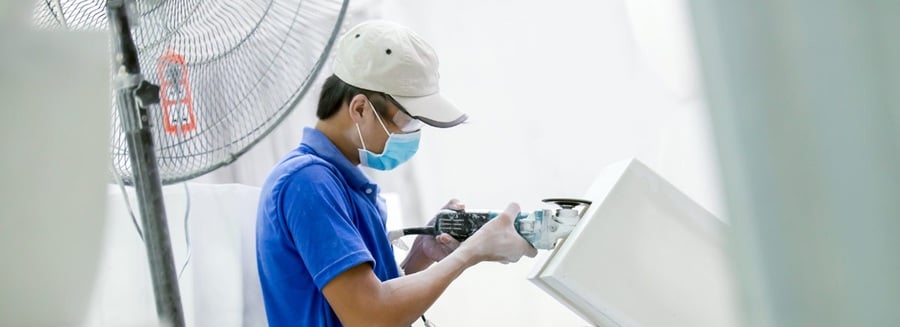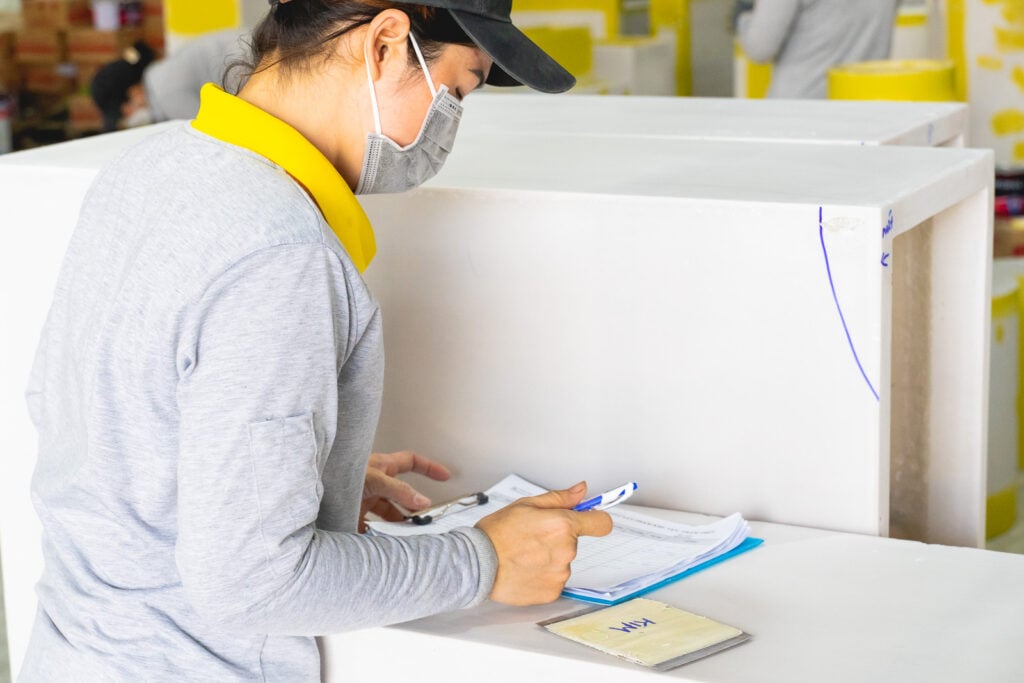Whether you currently have a brand with an existing customer base or you are just starting up, there comes a time when you want to find a reliable manufacturer to launch a new product.
There are two terms that may change your brand forever: OEM and ODM.
Before you sign a manufacturing contract, there are several factors you should be aware of to get the most out of these two distinct service offerings.
If you have no prior experience with a manufacturing process or you feel challenged to choose reliable manufacturers, keep reading!
- What does OEM mean? How does it work?
- What does ODM mean? How does it work?
- OEM vs ODM products: Two things to remember
- So, Which Contract Manufacturer Is Right For My Business?
- The bottom line: OEM versus ODM
- Following these easy steps to pick the right ODM and OEM supplier
- FAQs: OEM vs ODM
- Creative Design Manufacturing – Who are we?
What does OEM mean? How does it work?
The term OEM stands for Original Equipment Manufacturer, which refers to businesses and factories that manufacture orders based on the specifications provided by their clients. They then sell OEM products back to their client. In other words, an OEM company will produce products for another business.
For example:
- Apple is a technology company that invented and designed the iPhone.
- Foxconn factory is Apple’s supplier that produces their smartphone (using the OEM model).
Therefore, the design is exclusive to Apple and the production is carefully managed by their contracted manufacturers.
This results in a product that might have been assembled by many different manufacturers, but the product still retains the original specifications set by Apple.
What does ODM mean? How does it work?
The term ODM stands for Original Design Manufacturer, which describes a production company that offers standardized goods and essentially leases their designs to customers on a private label or white label basis, saving their customers the expense of product development and research.
For ODM manufacturing, customers only need to find a factory that produces the products they want. There is no need to design a product themselves.
When it comes to “making dreams come true,” original design manufacturing has been one of the most preferred ODM products in recent years as it shortens the time a brand takes to get its product to market. All they need to do is source a product that already exists.
Third-party phone chargers are an example of an ODM product. If you search for phone chargers on Amazon, you will notice that several manufacturers have roughly the same design. While the product uses the same fundamental design, each has specific branding, colors, and packaging according to the buyer’s needs.
OEM vs ODM products: Two things to remember

1. They may seem similar. They are not.
As a consumer or business owner, it’s essential to understand the terms and differences between them to create a successful business. The main difference between the OEM vs ODM is how product development is conducted. As the customer, you have to consider the differences in time, costs, and IP ownership.
In addition, OEM service providers are experts in meeting product specifications for their clients: from re-tooling their factory to ramping up production.
Meanwhile, ODM services often specialize in packaging design, not directly designing products.
2. It takes time to pick the right service
While developing your business, many circumstances can influence your way. If a brand has an R&D budget and a suitable time-to-market strategy, then working with an OEM is a good fit. If time and resources are limited, the ODM model is the best way for products to be manufactured with a quick turnaround.
In addition, an effective business relationship does matter if you are looking for overseas manufacturers. It is difficult for business owners or corporations to come to the location and monitor specific outcomes. You’ll need a genuine manufacturing partner who’s eager to bring your design dreams to fruition.
So, Which Contract Manufacturer Is Right For My Business?

Before you can answer this question, you should consider the risks and benefits of each service before signing a deal with a contract manufacturer. Whatever service you choose for your brand development, the solution should also assist you in the other business goals you set out.
Here are some scenarios for the pros and cons of using OEM vs. ODM services for your business challenges:
Pros of using an Original Equipment Manufacturer (OEM):
- Customize the product: Since buyers own the intellectual property and they have complete control of the product specifications, they can easily adjust their design requirements from the OEM manufacturer or shop around for a suitable partnership.
- Minimize manufacturing risks: OEM manufacturing allows customers to focus on their strengths which is usually not the manufacturing process. Instead buyers can invest more in marketing and research and avoid the financial risks of manufacturing.
Cons of using an Original Equipment Manufacturer (OEM):
- Hard to shift to other manufacturers: OEM companies tool their factory to the company’s specifications. If you need to switch your manufacturing company, it could take time to re-connect the supply chain and re-start production.
- Costs incurred: The buyers must pay for the special tools or molds required by the OEM manufacturers, based on the manufacturing requirements.
- Takes time: Because OEM manufacturing only focuses on producing, the OEM manufacturer is not an expert in the OEM product. They might misunderstand while taking design briefs. Since the model requires this handover of knowledge, the entire process also takes longer to get a final product.
Top tip: Remember to manage expectations when OEM manufacturing
There is a big misunderstanding of business owners when they hand over their product designs to an OEM service. They believe that the original equipment manufacturing will take responsibility for researching the legalities of product compliance. However, this is not the case. If you have a new product, make sure to conduct legal and market research before briefing the OEM to produce.
Pros of using an Original Design Manufacturer (ODM):
- No costs incurred: Unlike OEM, the manufacturer usually has paid for the special tools or molds already before a buyer approaches them.
- Production is straightforward: When buyers find contracts for their production, the ODM company already has working examples of their desired product. Plus ODM’s have a good understanding of what buyers want in terms of branding of which they specialize in. This saves time and reduces the number of production complications.
- Quickly get to market: Choosing ODM manufacturing is the fastest way to get a product to market. The ODM has proven production capabilities from packaging to branding, plus they already spent the time to research and develop working versions of the finished product.
Cons of using an Original Design Manufacturer (ODM):
- Less flexible: Buyers cannot earn any intellectual property rights or ownership that belongs to the ODM suppliers or third parties. This means they are fairly restricted in adjusting technical specifications to far from the original product design.
- Similar USPs: Since ODM suppliers have intellectual property ownership, they can sell to other companies without the permission of their clients. This often leads to a marketplace consisting of like-for-like products that are only differentiated by the branding.
- Losing a supplier means losing the product: Again, not having that IP means you seed control to your ODM manufacturer. If you happen to lose your contract, it may be difficult to find a replacement supply chain with similar products.
Top tip: Try to negotiate terms that protect your supply chain
Like any form of contract manufacturing, the buyer must negotiate favorable terms (production costs, payment terms, liabilities, etc). With an ODM model, you may want to add other protections into your contract such as guarantees the supplier didn’t copy the ODM products from another company.
The bottom line: OEM versus ODM
When deciding to use an OEM vs an ODM, it really comes down to available resources.
If a company has a research and development budget, along with a reasonable time-to-market plan, then using an OEM is a good fit. If time and resources are scarce, then ODM is the route to go to launch a product with the least effort and investment necessary.
Following these easy steps to pick the right ODM and OEM supplier

Using OEM and ODM products can launch your company to the next level while saving you time, and money, and reducing the stress and responsibility of producing products yourself. Here are 4 steps to help you pick the right contract manufacturer.
Step 1: Be specific about what you need.
When you have a clear idea of what you want, it is much easier to choose a manufacturer. For example, if you need to make pants, you can now concentrate on finding a producer who is skilled in clothing.
You must also understand your current business costs and the investment needed for stock so that you can evaluate how much you can spend on manufacturing while still making a profit.
Related article: How MOQs play a big role in the success or failure of your business.
Step 2: Do your homework
Make a detailed plan that shows the type of supplier you need to work with, the number of processing plants you may need, the purchase order amount, and any logistical requirements.
Create a long list of suppliers and then conduct background checks on the top 15-20 manufacturers. Check with them directly to see if they have a track record of success and experience delivering your type of products and using your required manufacturing procedures and tools.
Related article: The benefits of working with a Made-In-Vietnam planter manufacturer
Step 3: Obtain a sample for verification.
Before you make your final decision, you’ll need to obtain a sample of your item to inspect the quality. The cost of samples can range from free to a limited cost. Some products might only be available to inspect during a visit to the factory.
Genuine manufacturers will have no problem with this; in fact, it’s reasonable to expect an audit of some kind from the buyer.
If they’re unwilling to send you samples or allow an inspection, they’re not going to be a good partner, and you should replace them right away.
Step 5: Set out terms for a successful partnership
When you have the sample that you require and have gone through the testing process, now it’s time to submit your request and begin the full production process.
You must create a purchase order form (PO). If you don’t, and instead simply accept the proforma receipt from your producer, you may be putting yourself at risk. If you write the PO, you have complete control over the details of your order.
Furthermore, you can include the terms your contract manufacturer must agree to. Get a confirmation that the agreement includes all payment terms and penalties for noncompliance.
Step 4: Take note of your manufacturer’s communication and problem-solving abilities

After discussing with the supplier, you will have a better idea of their production ability and authenticity. Remember to pay attention to:
- Their communication ability to maintain the partnership.
- Their capability to respond to any unexpected setbacks or changes in design requirements
- Their commitment to maintaining product quality with established quality control measures
Of course, it’s also important to know their factory location and how this benefits your supply chain and manufacturing costs. Learn why Vietnam manufacturing and sourcing saves you money.
FAQs: OEM vs ODM

Which is the smarter choice between OEM and ODM?
You would save valuable time with ODM since you can get a final product without engaging yourself in the tiresome product development process. In OEM, you have to develop the product yourself.
Is ODM the same as private labeling?
In concept, yes. The idea behind ODM and private labeling is that the manufacturer provides a generic product that the buyer can personalize with their own logo.
A private-label item is one that is manufactured by one company but bears the brand name of another. Overall, the item’s manufacturer provides an instant ‘item format’ to which different purchasers can apply their own brands. Another important criterion is that private label items are made with existing tooling, such as infusion molds.
The benefit of private labeling is that you can create a branded item without investing excessive time and money in product development and tooling. As a result, you can ship an item much faster and at a lower cost.
This is beneficial if you intend to release a ‘non-exclusive’ item that is already available in some form. As a result, you can’t make configuration changes to a private label item, making it more difficult to break rank and produce a product with a unique USP.
Difference between white label and private labels. How are they related?
As mentioned above, some might ask what exactly are the differences between private label products and white labeling.
- White label: White labeling starts with a generic product, which is then sold to multiple wholesalers and retailers. In a nutshell, such companies all buy the same product with a blank label and differentiate their brand by other means.
- Private label: The word “private” explains a lot. Yes, it is similar to white labeled products, except private labeling companies offer exclusive production. A private label product is, therefore, more unique and you would likely go for the OEM model for this end goal.
Creative Design Manufacturing – Who are we?

Creative Design Manufacturing (commonly known as CDM) is a dependable manufacturing powerhouse specialized in hand-made fiberglass planters that supply some of the world’s most well-known brands.
Offering both ODM and OEM services, our various factories are equipped to bring your product needs to reality.
If you are looking for a new partner for your forthcoming manufacturing requirements, we do it all – from delivering entire standard product ranges to customized manufacturing, as well as worldwide shipping.
Contact us and feel free to include your biggest manufacturing desires and challenges. We are pleased to work with you!
In conclusion, we hope our article can make your business decisions a little easier. As part of our mission to be the best manufacturer in our niche – planter solutions, we regularly pack our blog with the latest manufacturing trends and expert guides to use our planters to reach your business goals!
